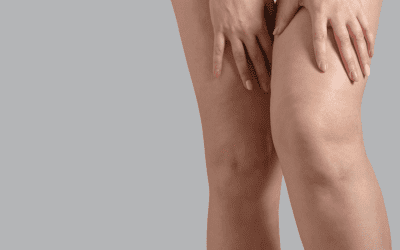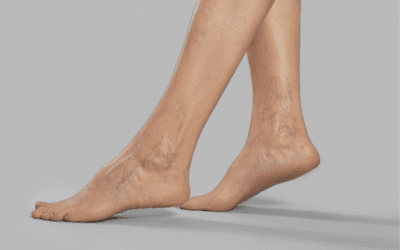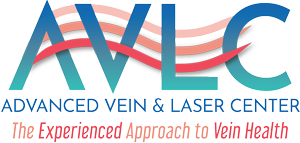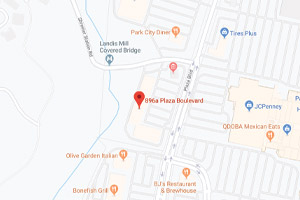While minor swelling in the legs is common and not usually a cause for concern, swelling that is excessive, unexplained, or long-lasting may be a sign of a medical problem.
Swelling can be caused by a range of conditions from bug bites to bruises. After an injury, your body sends fluid to the affected area to help it heal. As the injury heals, excess fluids and the swelling goes down.
If you experience swelling that does not go away on its own, make an appointment or visit our vein clinic – Advanced Vein & Laser Care Center, to get vein treatment in York & Lancaster based centers, for your individual conditions.
In some cases, however, your body may not be able to adequately circulate fluid, especially in the areas that are farthest from your heart, like your arms, legs, hands, legs, and feet. This type of swelling is called peripheral edema, and it can signal more dangerous issues, including:
- Blood clots can travel to your heart, lungs, or brain.
- Heart disease and heart failure.
- Infection
- Kidney damage or kidney disease
- Liver disease
- Lymphedema
- Severe allergic reactions
- Venous disease
You should seek emergency care if you have sudden, unexplained swelling in just one limb or if it occurs along with chest pain, trouble breathing, coughing up blood, fever, or skin that is red or warm to the touch. These can be symptoms of dangerous conditions like deep vein thrombosis (a blood clot in the leg), pulmonary embolism (a blood clot in the lungs), or cellulitis (a skin infection).
You can read more on causes, symptoms & treatment options for deep vein thrombosis.
Now, let’s take a deeper look at some of the causes of swollen legs.
Venous Disease
The veins in the legs contain valves that prevent blood from flowing backward. Venous insufficiency involves these valves not functioning effectively. As a result, the veins no longer transport enough blood from the heart. When a person has venous insufficiency, the blood becomes trapped in the soft tissues of the lower legs and ankles. A person may also have:
- Skin ulcers
- Changes in skin color
- Infection
How is Venous Disease Treated?
The treatment aims to restore healthy blood flow. This may involve not crossing your legs when sitting or lying down, elevating your legs, getting more regular exercise, and wearing compression stockings. Dr. Heird may also recommend medications, and the type depends on the severity of the venous insufficiency and the person’s overall health.
Blood Clot (Deep Vein Thrombosis)
A blood clot in the leg can cause the ankle and leg to swell. This may only happen on one side of the limb. There are two main types of blood clots. Superficial blood clots occur in a vein closer to the surface of the skin. Deep vein thrombosis (DVT) occurs in a vein deeper within the body. A person needs immediate medical attention if they have any of these symptoms of a blood clot:
- Swelling and pain in one leg
- A heavy ache in the leg
- An area of warm skin on the leg
- An area of red or flushed skin behind and below the knee
- A change in the colour of the leg
- A low fever
Sometimes, a piece of the clot breaks loose and travels to the heart, lungs, or brain. This can be life-threatening without treatment. The risk of a blood clot is highest for people who are pregnant, people who are immobile due to surgery, have obesity, or are older adults.
How are Blood Clots Treated?
Treatment options include:
- Blood thinners. The medicines help prevent blood clots from getting bigger. Blood thinners reduce the risk of developing more clots. Blood thinners may be taken by mouth or given by IV or an injection under the skin. There are many different types of blood thinning drugs used to treat DVT. Together, you and Dr. Heird can discuss their benefits and risks to determine the best one for you. You might need to take blood thinner pills for three months or longer. It’s important to take them exactly as prescribed to prevent any serious side effects. People who take a blood thinner called warfarin need regular blood tests to monitor levels of drugs in the body. Certain blood thinning medications are not safe to take during pregnancy.
- Clot busters (thrombolytics). These drugs are used for more serious types of DVT or PE, or if other given medications aren’t working. Clot busters are given by IV or through a tube placed directly into the clot. They can cause serious bleeding, so they’re usually only used for people with severe blood clots.
- Filters. If you can’t take medicine to thin your blood; a filter may be placed into a large vein – the vena cava – in your belly (abdomen). A vena cava filter prevents clots that break loose from lodging in the lungs.
- Compression stockings. These special knee socks help prevent blood from pooling in the legs. They help reduce leg swelling. For DVT, you typically wear these stockings during the day for a few years, if possible.
You can read more on warning signs of blood clots.
After Care Tips
After DVT treatment, follow these tips to manage the condition and prevent complications or more blood clots:
- Ask about your diet. Foods high in vitamin K, such as spinach, kale other leafy greens, and Brussels sprouts, can interfere with the blood thinner warfarin.
- Take medications as directed. Dr. Heird will tell you how long you need treatment. If you’re taking certain blood thinners, you’ll need regular blood tests to see how well your blood is clotting.
- Watch for excessive bleeding. This can be a side effect of blood thinners. Ask Dr. Heird about the warning signs. Know what to do if the bleeding happens. Also, ask Dr. Heird if you have activity restrictions. Minor injuries that cause bruising or even a simple cut may become serious if you’re taking blood thinners.
- Move. If you’ve been on bed rest because of surgery or other reasons, the sooner you get moving, the lower the chance that blood clots will develop.
- Wear support stockings. This might not be the look that you’re going for, but it does certainly help.
Get Your Vein Disease Treated by Experienced Vein Specialist in York & Lancaster
Advanced Vein & Laser Centre will be able to assist with swelling in your legs. Our Vein Specialists – Dr. Steven Heird and Dr. David Winand are experienced and reputable experts when it comes to treating vein diseases and any vein-related problems. Get in touch to find out what we can do for you.

Dr. Steven Heird, MD, is a distinguished specialist in the treatment of venous disease and vascular surgery. As one of the dedicated doctors at the Advanced Vein and Laser Center, located in York and Lancaster, Pennsylvania, Dr. Heird has made a significant impact in the field of vein care. His expertise and commitment to patient well-being have earned him a trusted reputation among his peers and patients. Dr. Heird’s work at the Advanced Vein and Laser Center reflects his passion for providing compassionate and effective vein care, improving the lives of those he serves with precision and care.







0 Comments